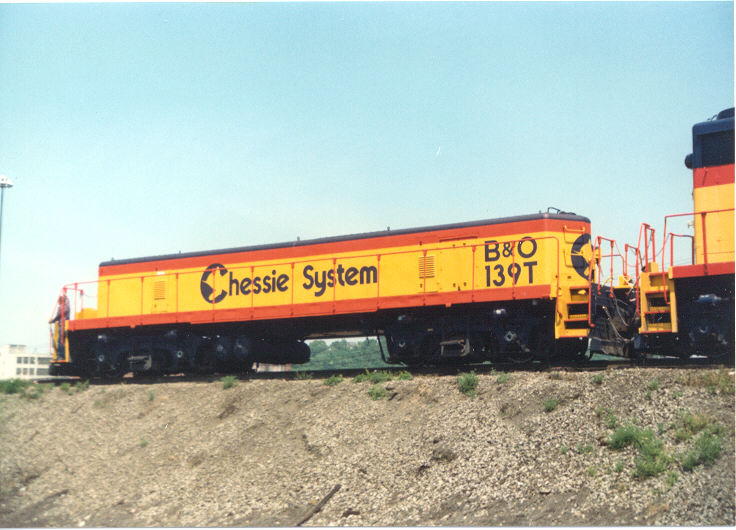The C&O slugs were usually mated to equally
rare GP39s. This was a semi-permanent
arrangement, and certain slugs and their "mothers" could be
seen together for years.
The B&O slugs
usually operated with a homemade SD20-2. SD20-2s were
modified SD35s. 139T was usually
seen with 7704 or 7701.
The slow speed benefits of a slug were cancelled out above 10 mph or so and the slugs were turned off. Most slugs were used in yard service because of this. The C&O even put two slugs with a GP39 some times. As the set sped up the rear most slug shut off above a slow speed, like 10 mph and the second cut off at a slightly higher speed, like 15 mph.
Below is a Dean Heacock pic of 139T. Notice
there
is no fuel tank between the trucks. A slug holds no fuel,
since it has no prime mover
(engine), it just
uses the electricity from the mother unit.
